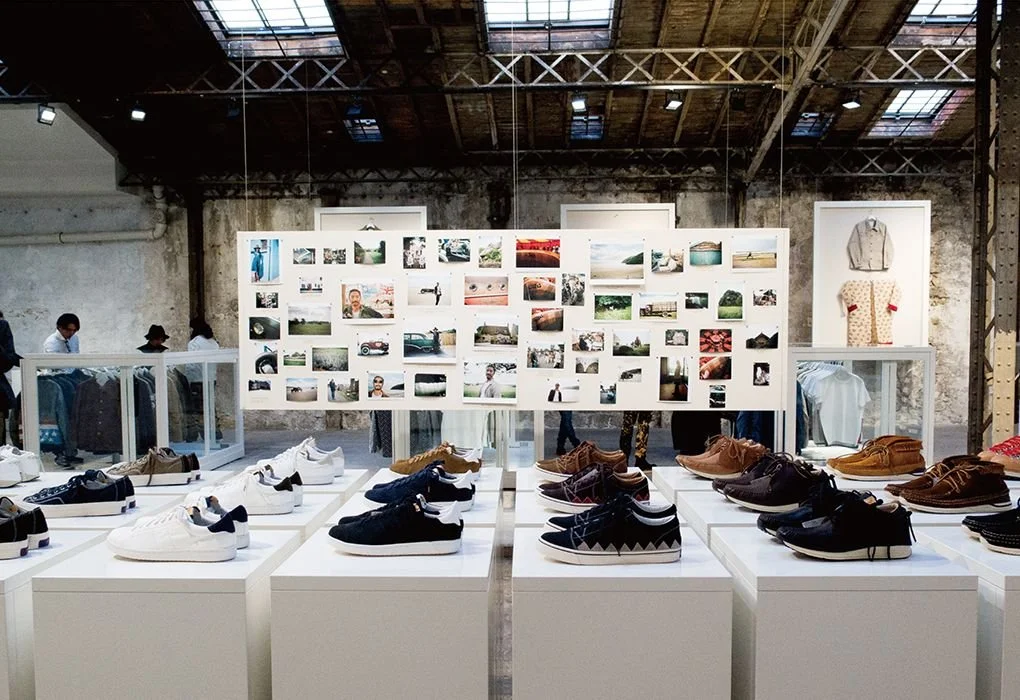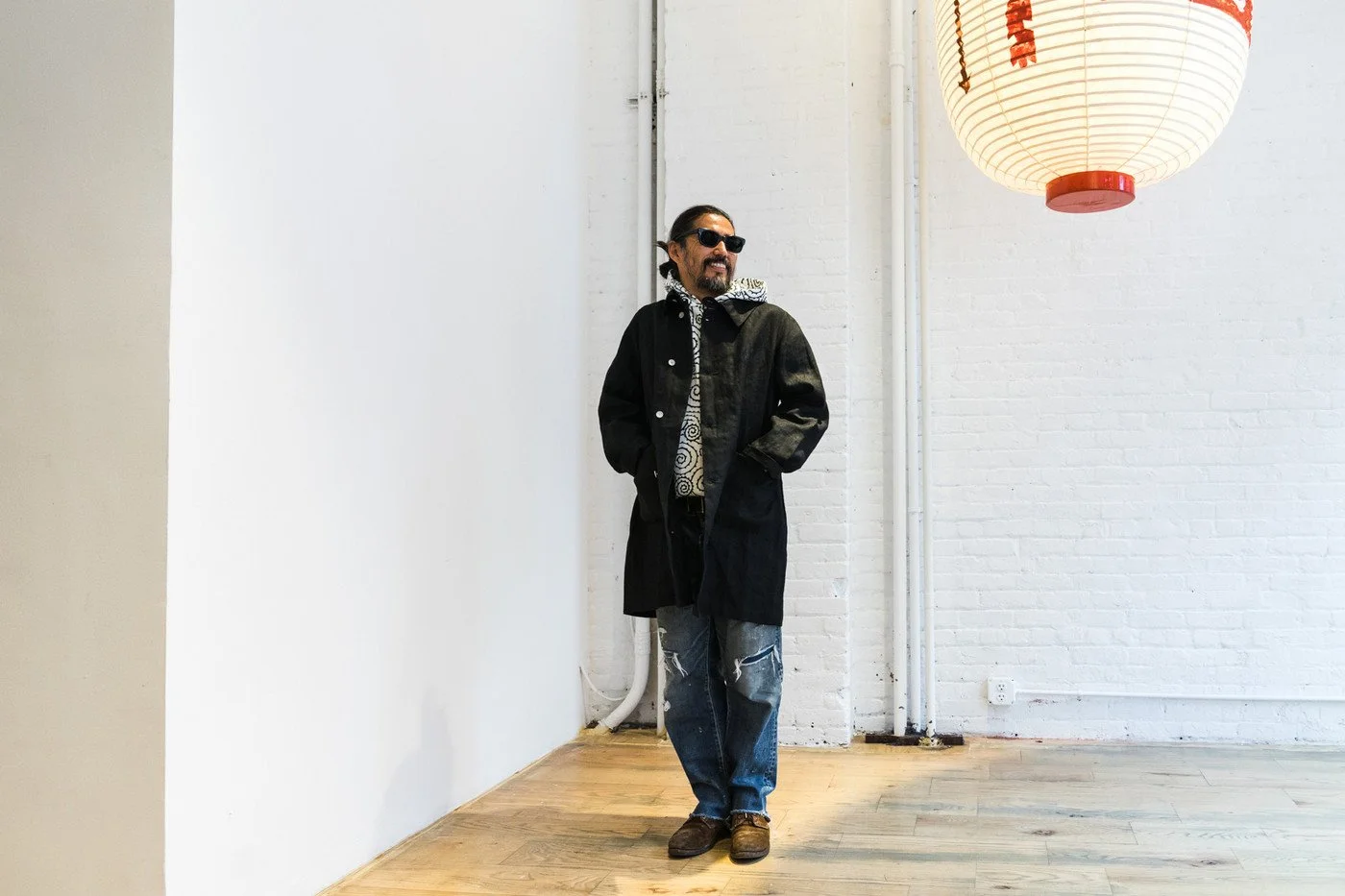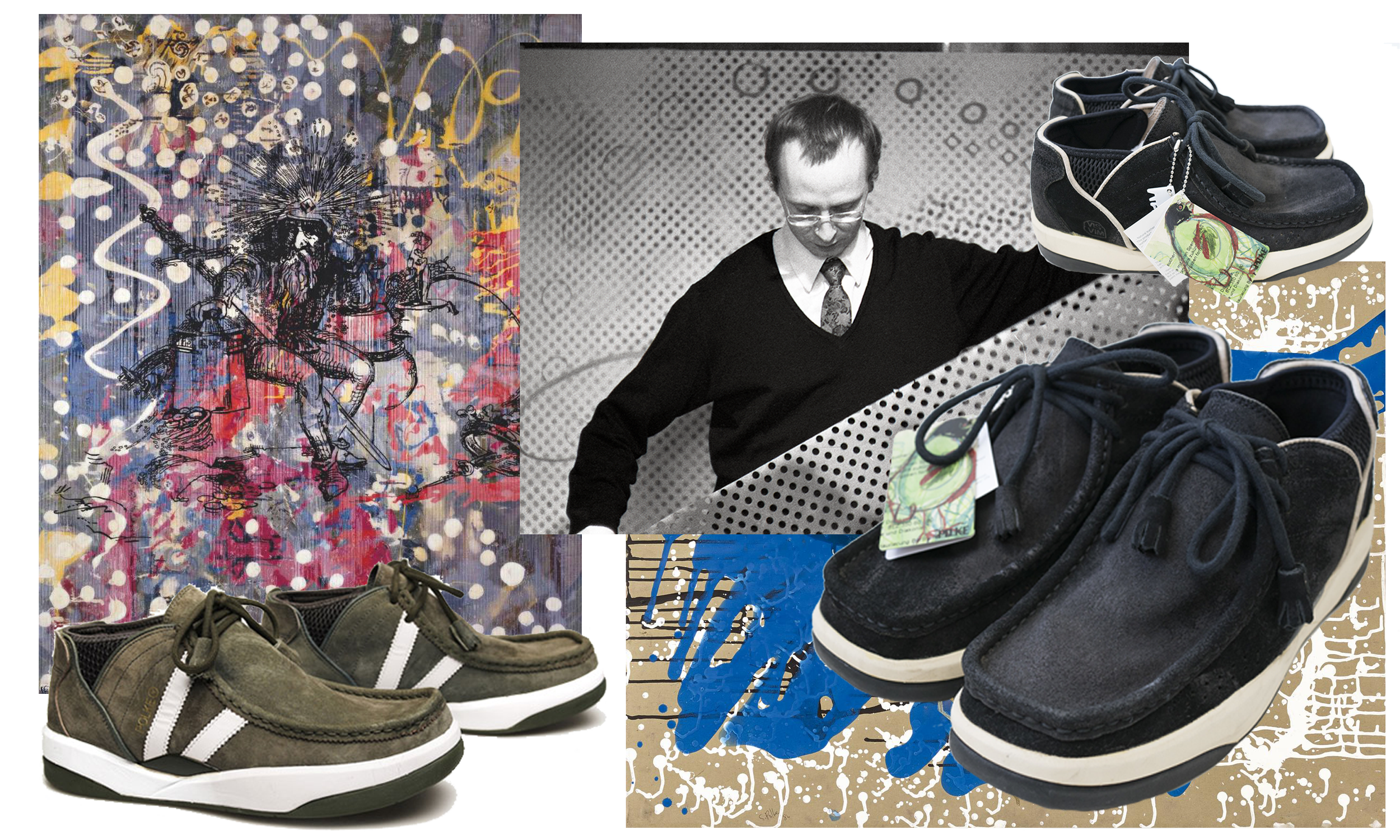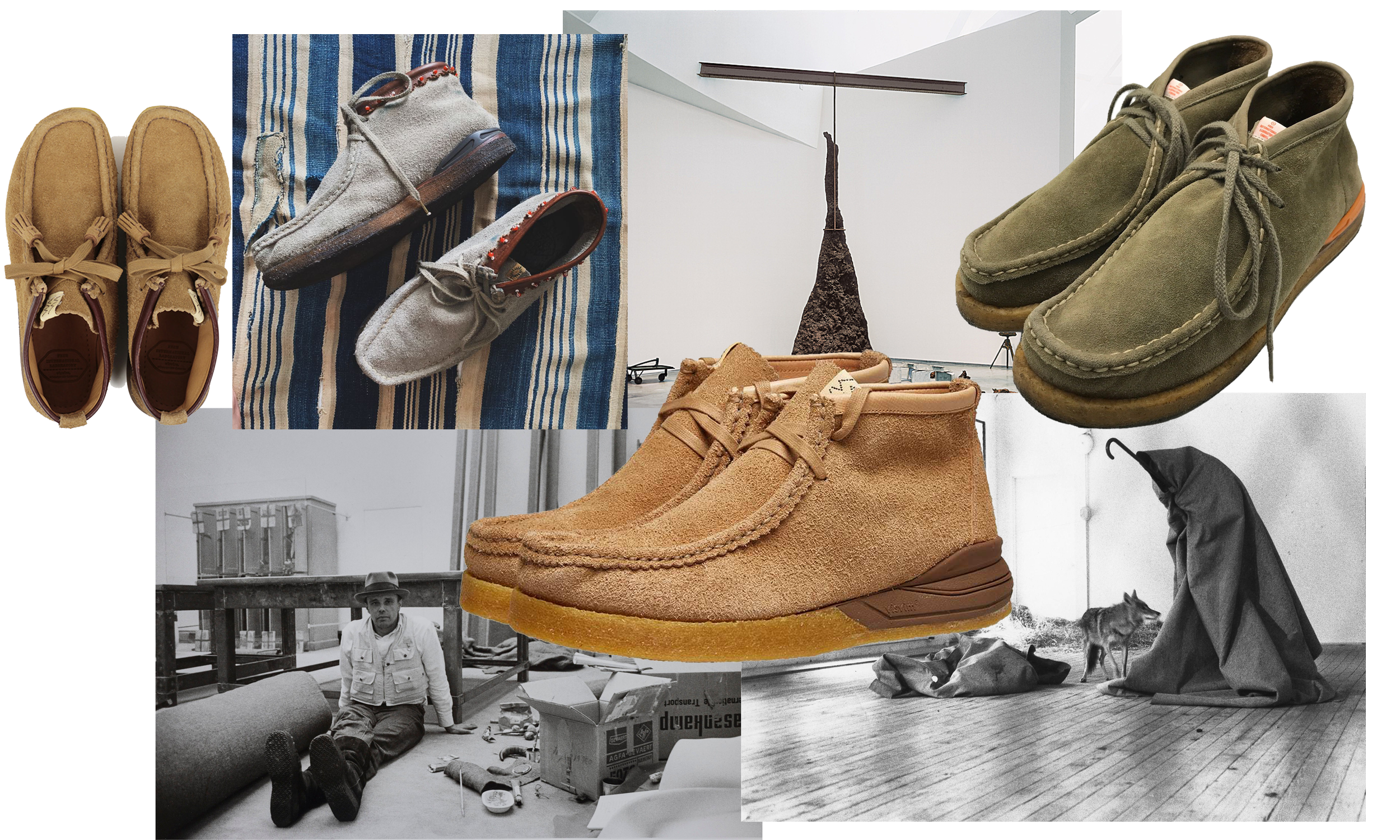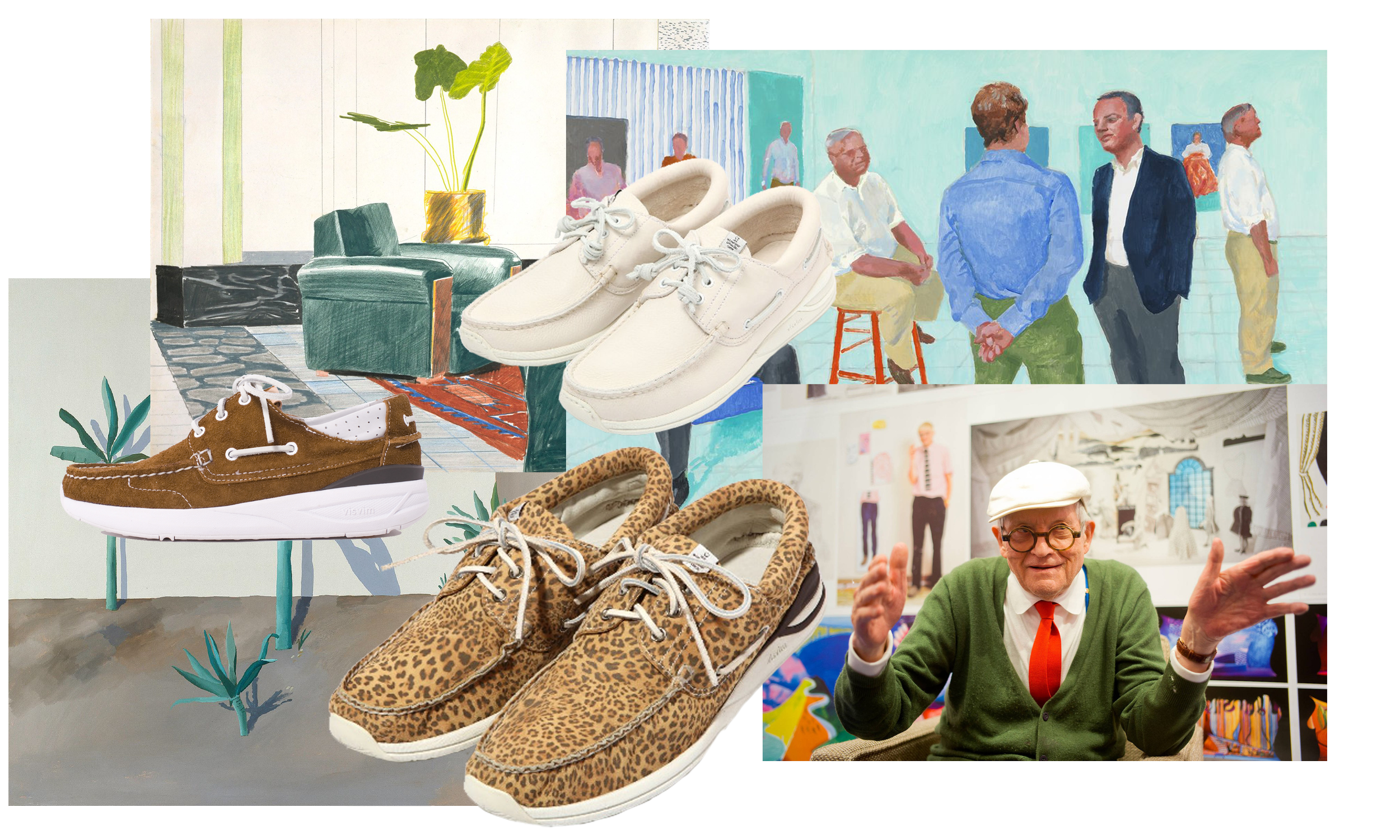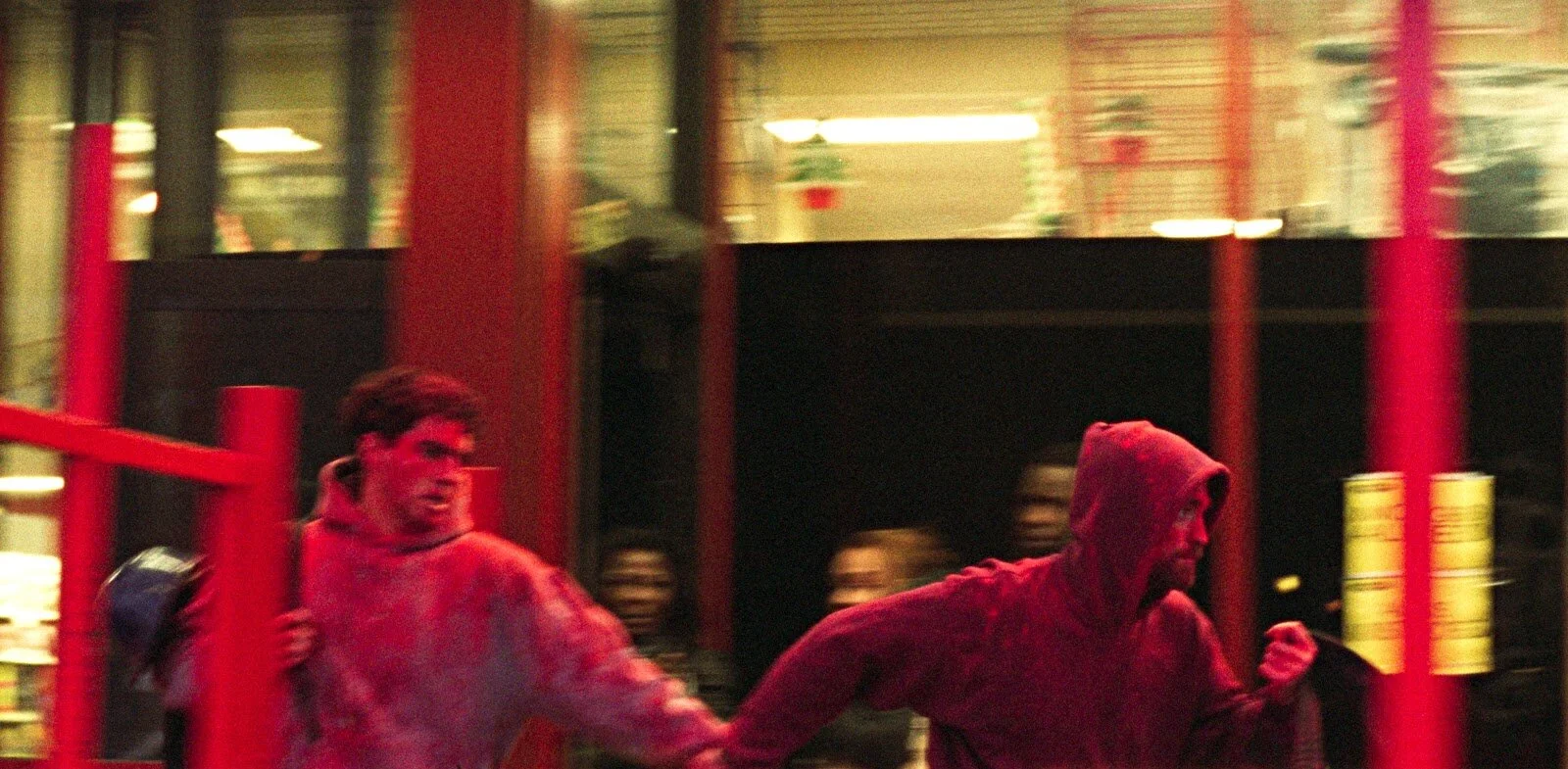What’s in a Namesake?
Hiroki Nakamura at visvim’s Spring/Summer 2018 presentation.
Source: HB
Hiroki Nakamura is a master of creating a whole cosmos around his clothing collections and charging anyone who wants to participate in the visvim universe or, at least to experience its atmosphere. Just consider the meticulously curated retail stores, the F.I.L. (Free International Laboratory) Indigo Camping trailers, the dissertations about visvim’s production techniques, the Subsequence magazine, or little cloud coffee for example.
One sometimes overlooked but no lesser contributing aspect of that worldbuilding is the naming of the product. Most visvim garments have some kind of reference piece pulled from Nakamura's vast personal archive of vintage products as an inspiration behind it, and often get named with nods to things he likes. Even though the brand name itself does not have any particular meaning, there is a lot to decipher in case one is interested. From Russian mountains to terminology rooted in North American indigenous culture - a lot of that actually - and pop-cultural references. Take the Bickle M-65-type jacket, which obviously is named after Travis Bickle, the notoriously mentally unstable protagonist of Martin Scorcese’s Taxi Driver.
Also, the reference behind visvim’s arguably most popular shoe, the F.B.T. is quite well documented. In case you need a reminder: Urahara legend Hiroshi Fujiwara pointed out a mocassin-style shoe worn by Terry Hall on the CD cover for Fun Boy Three’s The Best of Fun Boy Three album to Hiroki Nakamura and suggested creating a similar silhouette for visvim. Nakamura did just that and named it F.B.T.
And while identity theft is not a joke Jim, an often-frequented but rarely cited source of inspiration for naming visvim footwear, are modern and contemporary (mostly male) artists. Some are more well-known than others but all are worth examining in how their work might have influenced the design of the silhouettes named after them, or not.
Sigmar Polke
This low-cut Wallabee-adaption features what looks like a collapsable heel to transform the silhouette into a mule and was named after German experimental postwar painter Sigmar Polke. In comparison to Polke’s paintings, the shoe seems calmer overall. Also, why are there no colorways with Polka-dot (Polke-dot?) all-over prints on the upper? Maybe because they might be associated with pop art and Polke was openly critiquing those currents with his Capitalist Realism approach. Another interesting contrast between Polke and visvim might be different positions on the longevity of their work or product. Polke once stated ”Yes, my works are enshrined in museums, but I don't care if the pieces fall apart in 20 years.” while Nakamura emphasizes the intended durability of his garments and his vision to create “future vintage”.
Richard Serra
Presumably most known and celebrated for his large-scale, architectural-seeming steel sculptures (don’t tell David Hammons though), Richard Serra also has a visvim namesake. The silhouette reminiscent of a classic Danner Mountain boot aptly has a clear and robust, almost brutalist, look to it. Especially the limited pack donning geometrical patterns created in collaboration with AFFA - short for ANARCHY FOREVER, FOREVER ANARCHY, the streetwear-”micro-label” co-founded by UNDERCOVER’s Jun Takahashi and Hiroshi Fujiwara - fits the description. There was also an excellent dark navy execution of the visvim Serra in conjunction with SOPHNET.
Christo Javacheff
After the FBT, the Christo sandal is maybe the second-most popular visvim silhouette. It borrowed its name from Bulgarian artist Christo Javacheff, who is famous for the dynamically enveloping installations he conceived of with his wife Jeanne-Claude Denat de Guillebon as a duo better known as simply Christo & Jeanne-Claude. It could be intentionally ironic to name the most “open” Visvim shoe after them. But more likely, the different layers of fabric and straps reminded Hiroki of the wrapping techniques applied by the artists.
Joseph Beuys
In addition to being the inspiration for visvim’s denim program with the “Social Sculpture” term he shaped, Joseph Beuys also is the namesake of this boot silhouette. Like the Polke, here we have another pretty obvious Wallabee reference, crepe sole and all. Matching the raw aesthetics, earth-tone colorways, and high-friction surface, one could really imagine Beuys wearing the shoe named after him. Also, suede is kind of similar to felt, right?
Anselm Kiefer
Visvim’s mandatory Chuck iteration was named after one of Beuys’ mentees, Anselm Kiefer. The painter/sculptor is widely known for his mostly rather grim work negotiating historical and mythical subjects. The visvim sneaker named after him was done in various colorways and modified editions over the years. Those include a colorway by Takashi Murakami’s Kakai Kiki & Hiroshi Fujiwara’s Fragment Design and one part of the infamous “MARKETING MACHINE” pack with COMME des GARCONS. Insert “canvas sneaker = canvas for expression” metaphor here.
David Hockney
Maybe even more fitting to the personal style and visuals assembling the body of work of its namesake in comparison to the Beuys; meet the visvim Hockney. You could see painter David Hockney happily wearing them and some subjects in his paintings, too - maybe even just standing around in a still life. Coming in at peak boat shoe, it is another slightly altered version of a classic footwear silhouette. Only the slightly thicker heel on the sole might give it a more unique shape.
Henry Flynt
Henry Flint is an American avant-garde artist and conceptual artist. His namesake visvim shoe might not be too avant-garde though. It’s more of a classic chukka shape with a vulcanized sole. While there are also collaborative pairs with Mastermind Japan including metal skull pins and all, the best versions of the model are probably those premium suede iterations with sashiko-style stitching around the ankle collar - just excellent.
Juan Gris
This rounder, softer Moc-style (does anybody dare to think UGG?) boot can come with flat Vibram or shark soles. The artist behind its name inspiration might be the oldest of the bunch. Juan Gris was a Spanish painter and one of the most prominent members of the cubism movement. He mostly painted portraits or still lives of everyday objects and added a further layer by abstracting them. Maybe it fits that the boot might look like a work boot at first glance but probably won't serve the purpose associated with those featuring such a soft suede upper - but that could also be a stretch.
Jack Wolfe
Saving the weirdest for last, the Wolfe is visvim’s creeper silhouette. Also, this artist reference might not be as apparent as some of the others previously mentioned. Still, there is a chance that the shoe borrowed its name from Jack Wolfe, who was an American painter. He apparently was mainly known for his portraits and political subject matter. One can only speculate on the shoe referencing a punk rock or rockabilly phase Hiroki Nakamura might have had in his youth and fittingly naming it after a political artist.
Thumbnail image: Visvim FW15 showroom.
Source: Pinterest

